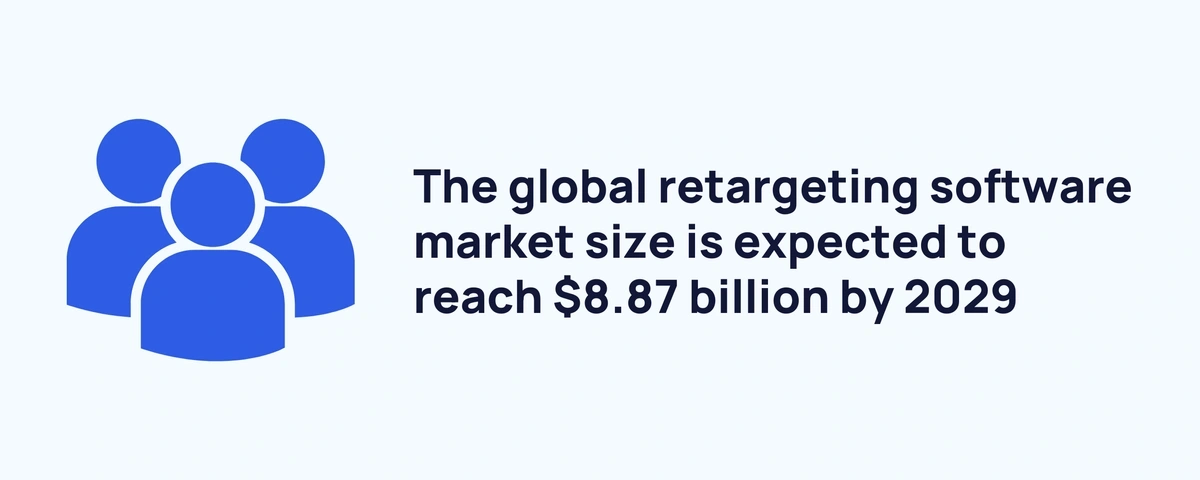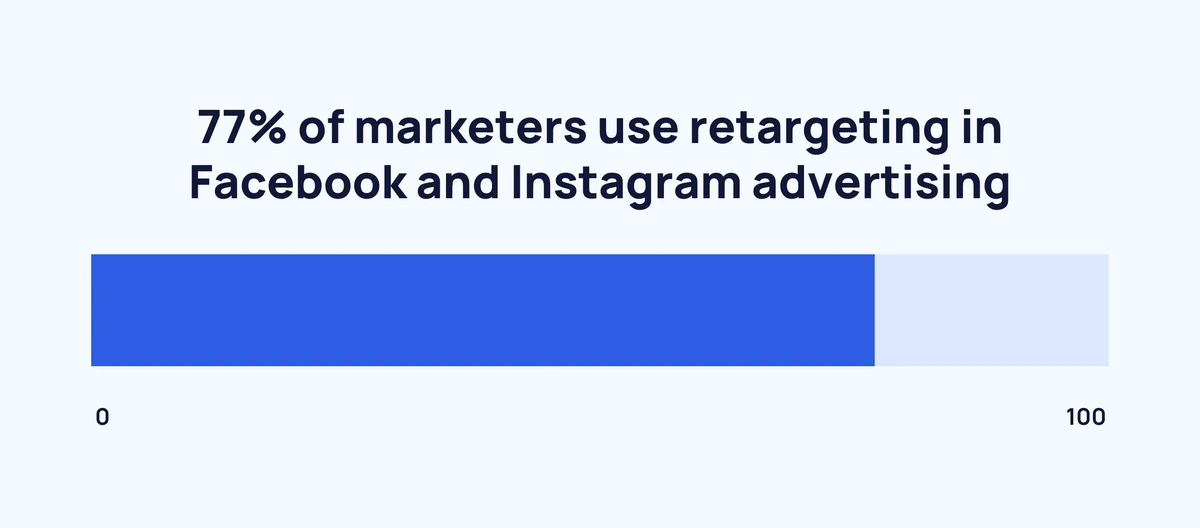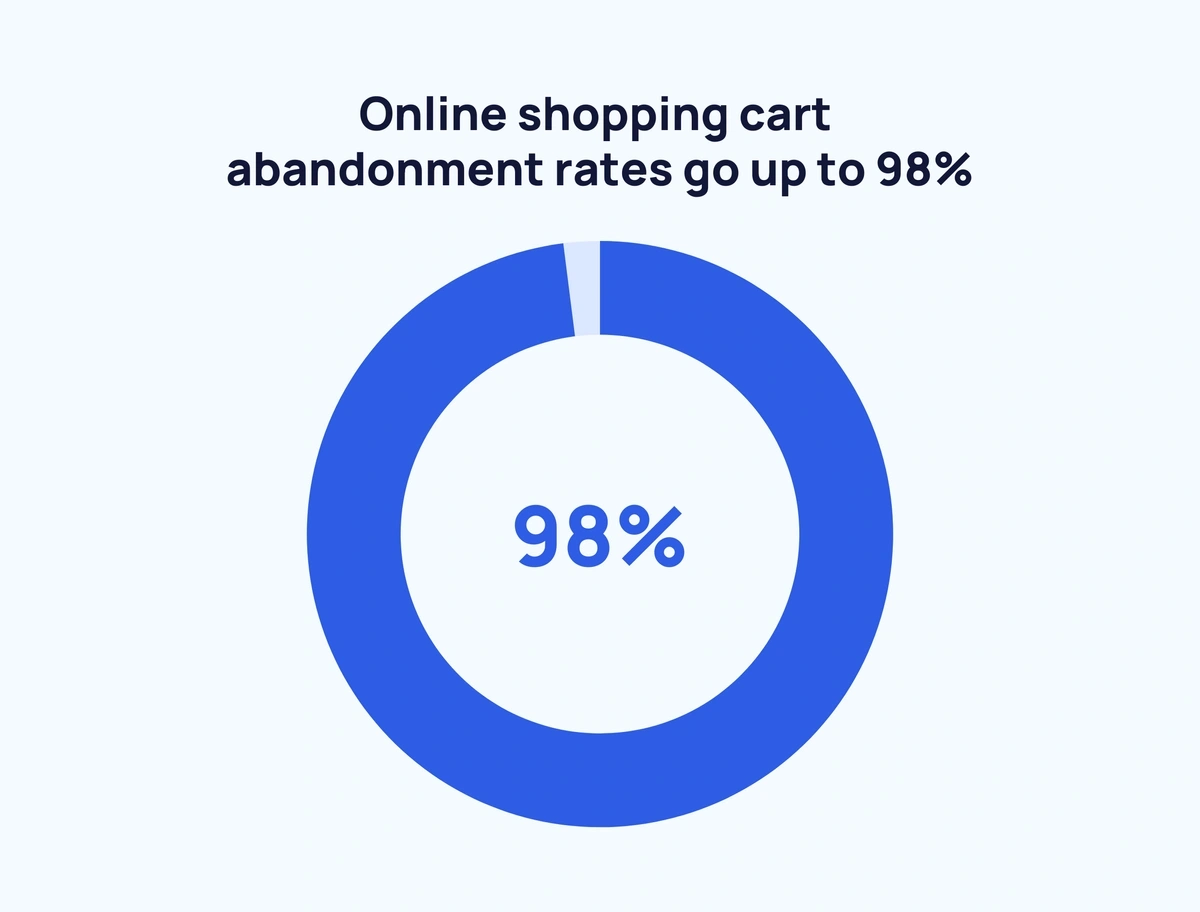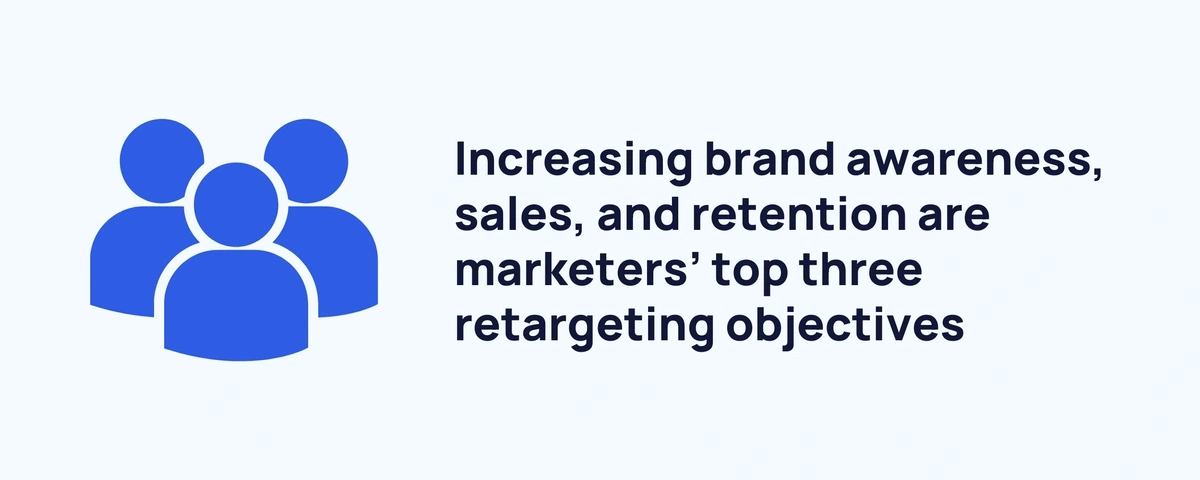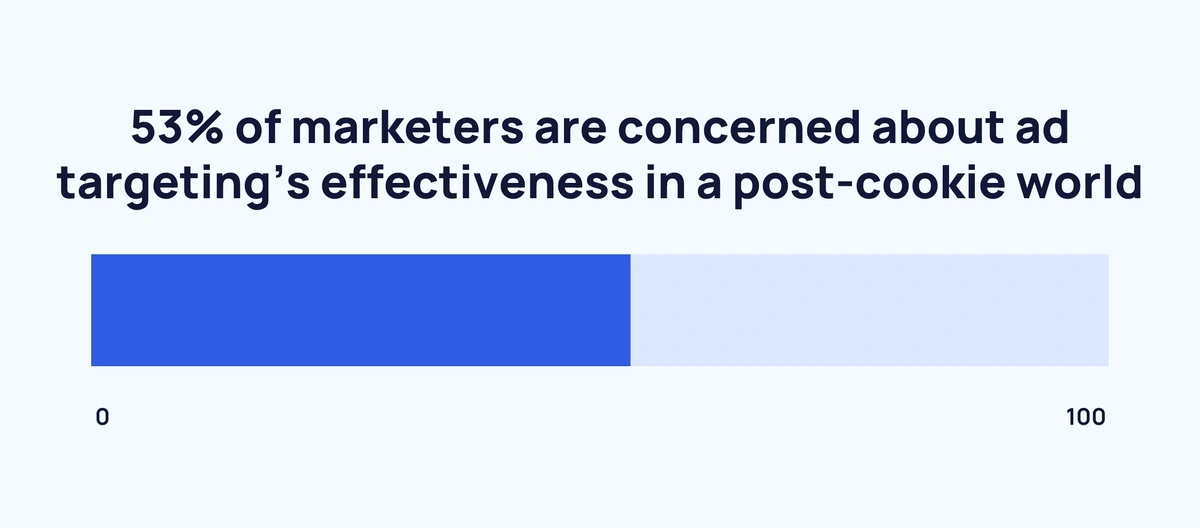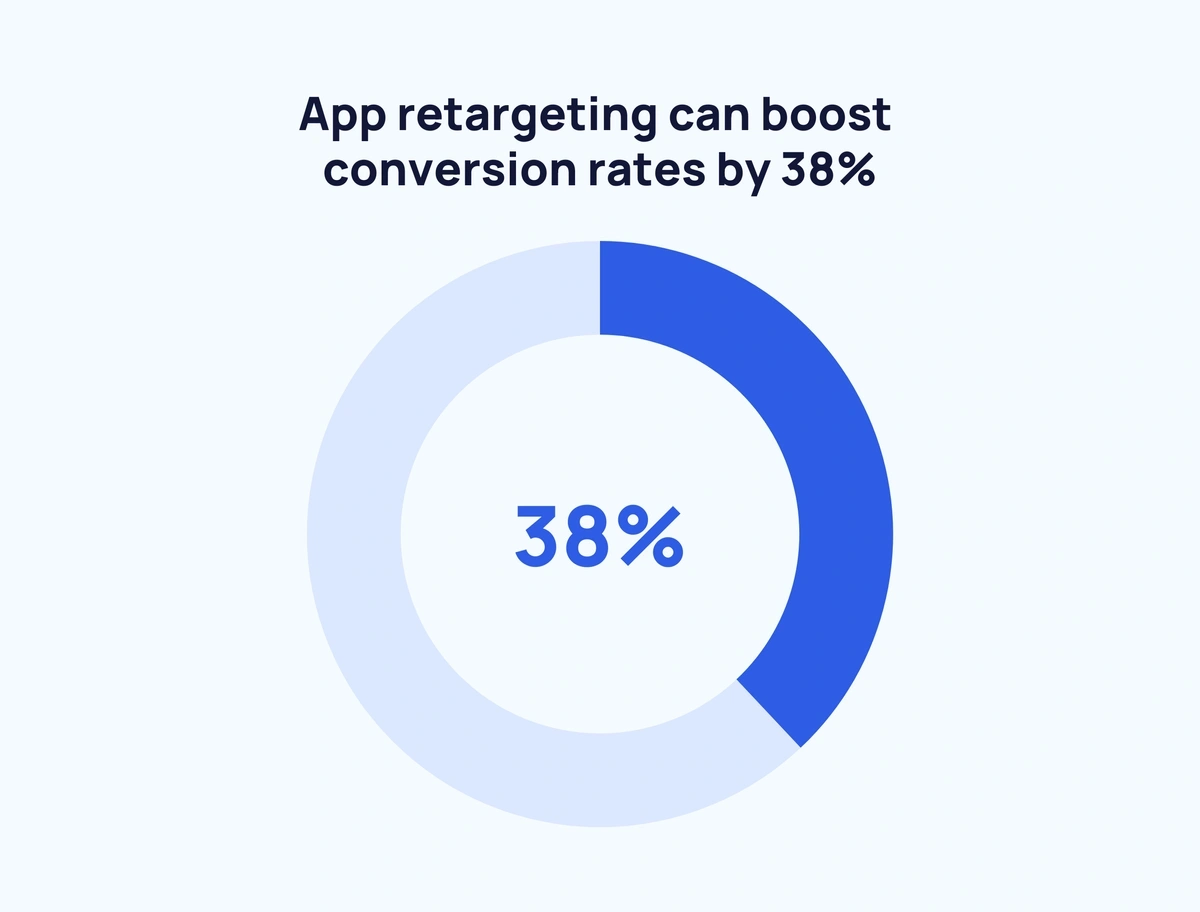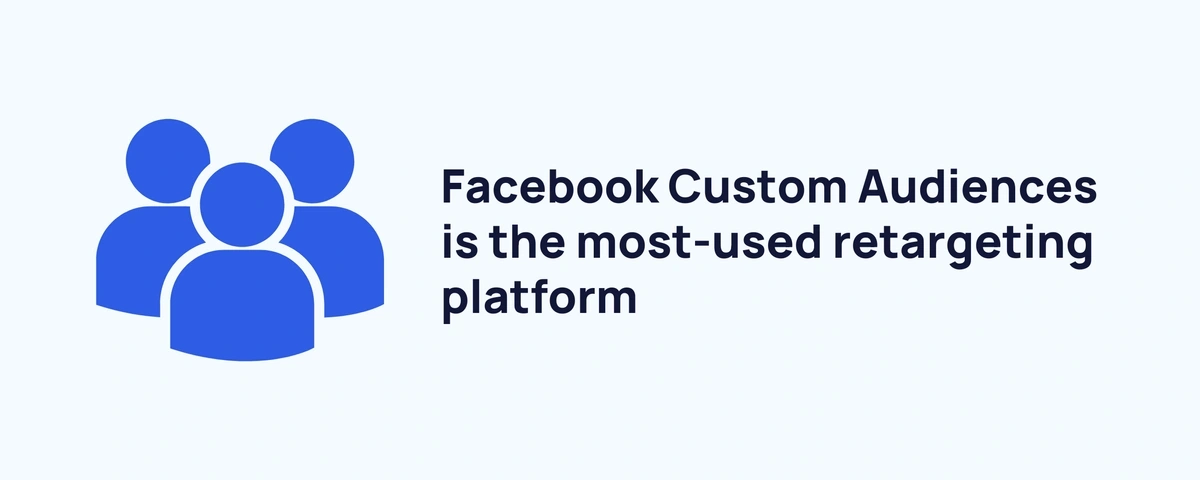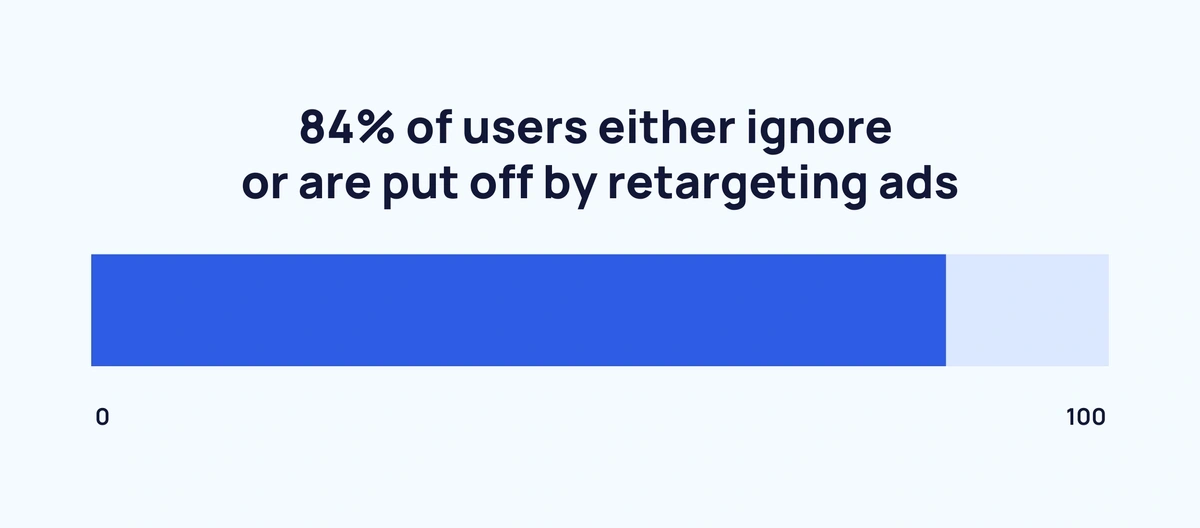
21+ Retargeting Statistics and Trends (2024)
Retargeting (aka. remarketing) helps brands win back users’ attention long after visiting their website. By storing user data, marketers can serve retargeting ads to potential customers through search engines, social media platforms, email, and mobile apps.
How well is retargeting paying off for brands and marketers? And how do customers feel about seeing branded ads long after they’ve left a brand’s website? These stats reveal the state of retargeting today.
Top Retargeting Statistics
Before you read the full report, take a look at these top seven retargeting statistics:
- The global retargeting software market is expected to reach $8.87 billion by 2029
- 1 in 5 marketers has a dedicated retargeting budget
- 77% of marketers use retargeting in Facebook and Instagram advertising
- Retargeted users are 8x cheaper to reach per click
- 88% of businesses already use or plan on using AI to optimize their retargeting campaigns
- 84% of users either ignore or are put off by retargeting ads
- 53% of marketers are concerned about ad targeting’s effectiveness in a post-cookie world
The State of Retargeting
Policymakers have strengthened online privacy laws and cracked down on third-party cookies. Instead of abandoning retargeting, the industry has pivoted toward harnessing first-party user data to serve ads across nearly every channel. Thanks to these new approaches, the retargeting industry is healthier than ever.
The retargeting software market is projected to hit $8.87 billion in 2029 (Data Bridge Market Research)
Analysts valued the global retargeting software market at $2.9 billion in 2021. The market is projected to grow at a 15% CAGR throughout the rest of the decade. Increased adoption of cloud-based software solutions and the steady rise in social media users are both key drivers behind the industry’s growth.
1 in 5 marketers has a dedicated retargeting budget (InvespCRO)
Marketers are seeing the ROI value in retargeting ads, so much so that 20% now have dedicated retargeting budgets. 50% of marketers also say they plan on investing more in retargeting campaigns over the next six months.
88% of marketers currently use or plan on using AI to optimize their retargeting campaigns (SharpSpring)
AI and machine learning can do a lot of the heavy lifting in segmenting target audiences. 86% of marketers are using AI to optimize their advertising and conversion funnels, while 82% have started using AI to optimize for specific KPIs.
Around 3 in 4 marketers use retargeting in Facebook and Instagram advertising (SharpSpring)
Most marketers focus the majority of their retargeting campaigns on social platforms like Facebook and Instagram. Google advertising comes in second, with 69% of marketers naming Google as part of their remarketing strategy. Other channels utilizing retargeting are email (55%), Twitter (44%), and LinkedIn (35%).
SMBs are more likely to use search and social, while enterprises are more likely to use video and display for retargeting (SharpSpring)
80% of SMBs use retargeting on social media compared to 73% of enterprises. In search the gap is even wider: 60% of SMBs versus just 39% of enterprises use retargeting in search engine advertising.
Video and display ads are more of an enterprise game. 58% of enterprises use retargeting in video ads compared to just 27% of SMBs. 41% of enterprises use display ad retargeting versus 27% of SMBs.
Why Retargeting?
Most marketers know that customers need to interact with a brand several times before deciding to buy. When a lead visits a brand’s website or social media profile for the first time, there’s a good chance they’re leaving without converting.
Online shopping cart abandonment rates range from 50-98% (Statista)
Groceries and consumer electronics have the lowest shopping cart abandonment rates, but they still sit at 50%. The categories with the highest abandonment rates are cruise and ferry (98%), mobile providers (91%), airlines (90%), luxury (88%), and fashion (88%).
Retargeting can help remind and recapture many of these customers through email, search engines, and social media platforms.
First-time website visitors only convert 2.4% of the time (Business Insider)
Returning visitors are vital to online success, which is what makes retargeting so valuable. 48% of all ecommerce transactions come from returning visitors. Returning visitors also put items in their cart at nearly double the rate—14.8% versus 7.6%—of first-time visitors.
Retargeted users are 8 times cheaper to reach per click (I-COM)
Retargeting leverages the fact that warm leads are easier to convert than cold leads. I-COM, a digital marketing agency, reviewed their client work and found that retargeted display ads had a 180% higher click-through rate and a 292% higher conversion rate.
Retargeting Goals and Challenges
Like most marketing initiatives, building brand awareness and increasing sales and conversions are important goals in retargeting. But retargeting has its challenges as well—marketers must watch their budgets closely and take care not to harm their brand image by over-serving ads.
The top three retargeting objectives for marketers are increasing brand awareness, sales, and retention (SharpSpring)
Over half of businesses list brand awareness, driving sales, and customer retention as primary objectives for retargeting. For B2B companies, building brand awareness is the top retargeting goal (58%). B2C companies place more emphasis on improving customer retention (66%). Both segments place driving sales as their number two priority.
Return on investment is the most important retargeting KPI according to marketers (SharpSpring)
54% of marketers consider the return on investment a key performance indicator, edging out a return on advertising spend (40%), and cost per acquisition (36%). However, marketers who consider their retargeting programs highly successful put equal emphasis on all three KPIs.
Top retargeting challenges vary across business segments (SharpSpring)
What’s the biggest challenge when it comes to retargeting? The answer depends on who you ask. For B2B companies, it’s resources (38%) and brand image (36%). For B2C, it’s ad fraud (43%) and attribution (37%).
Challenges vary across company sizes as well. SMBs struggle with attribution (47%) and budget (33%) while enterprises find privacy (43%) and ad fraud (38%) to be the most challenging.
Over half of marketers are concerned about ad targeting’s effectiveness in a post-cookie world (Marketing Charts)
As web browsers and data privacy laws evolve, marketers are scrambling to adjust their strategies to a world without third-party cookies. 39% of marketers are also worried about how future use of cookies and ID tracking will impact brand reputation.
App Retargeting Statistics
There are over 200 billion mobile app downloads every year. The vast majority of those apps are only used once. With app retargeting, mobile brands hope to engage users and entice them back into their apps to shop and play.
Each year, between 20-25% of users abandon apps after a single use (Upland)
Retaining mobile users is an uphill battle for brands. Up to a quarter of users download an app, open it once, and never use it again. In fact, only 31-39% of users use an app more than ten times.
Data shows that app retargeting can boost conversion rates by 38% (Criteo)
App retargeting sends users back to forgotten apps with display ads — either through other apps, social media, or search platforms. In addition to boosted conversion rates, Criteo found that apps that use retargeting had an average of 30% higher retention rates, 62% more frequency of visits, and 224% more products browsed per user.
Food and drink apps have the highest retargeting adoption rate in North America (AppsFlyer)
62% of North American food and beverage apps use retargeting — the highest adoption rate of any app category. Shopping apps are right behind with a 52% adoption rate, followed by social casino (33%), finance (24%), and entertainment apps (17%).
Retargeting Platforms and Technology
Retargeting software enables marketers to serve ads to audiences no matter where they are. Platforms offer social media, search, and mobile retargeting as well as geotargeting and website visitor tracking. This section covers the top retargeting platforms and what marketers expect when using them.
The most-used retargeting platform is Facebook Custom Audiences (Built With)
40% of the top one million websites that use retargeting platforms use Facebook Custom Audiences. Meta’s retargeting platform allows brands to serve ads to any existing visitor across all Meta-owned channels like Facebook and Instagram.
Other top retargeting platforms are Google Remarketing (31%), Bing Universal Event Tracking (11%), Criteo (8%), and Twitter Ads (5%).
Access to target audiences is the top desired retargeting solution feature for 45% of marketers (SharpSpring)
When shopping for a retargeting solution, 49% of B2C and 41% of B2B marketers look for access to their desired customer base. B2C marketers also value ease of use (48%) and strong customer service (42%). For B2B marketers, costs (41%) and customizability (32%) are key considerations.
Customer service is the top area of improvement for retargeting solutions according to marketers (SharpSpring)
47% of marketers believe their retargeting platform needs to improve customer service. Other top areas for improvement are optimizing ad spend (42%), defining marketing and sales funnels (38%), streamlining the retargeting process (38%), and improving revenue attribution (34%).
Consumer Perspectives
“Ad fatigue” is a buzzword in digital marketing circles. So how are customers reacting to seeing ads from brands long after visiting their websites? These stats examine retargeting from the consumer perspective.
Consumers are comfortable with brands collecting purchase history, personal preference data, and basic demographics (Gartner)
Brands need user data to run retargeted campaigns. For consumers, some data are more appropriate to collect than others. Users are generally okay with brands collecting purchase history data (80%), provided personal preferences (77%), and basic demographics (67%).
Only 34% of users are comfortable with brands collecting their browsing history. Just 29% say it’s okay for brands to keep occupational and financial information.
Around 17 in 20 users either ignore or are put off by retargeting ads (InvespCRO)
That number may seem bleak, but any marketer would be happy to get a 16% positive response rate from retargeted ads. 9% of retargeted customers are reminded to visit a brand’s website again, while 7% respond to a special offer featured in the ad.
54% of users are somewhat or very concerned when they view a retargeting ad (InvespCRO)
In a time where data privacy is top of mind for 90% of online consumers, this statistic shouldn’t come as a surprise. The good news for marketers is that 29% of users have a neutral attitude toward retargeting ads, while 17% say they’re unconcerned.
Wrap Up
Marketers spend billions each year running retargeting campaigns to help strengthen their brands. Research has shown that the more times a prospect sees a brand’s messaging, the more likely they are to convert into customers.
Brands have a lot to gain from using retargeting — as long as they don’t overdo it. Ad fatigue is a real thing. Consumers can feel like brands are stalking them if they see ads across too many channels.
Are you looking for more industry deep dives? Read about the latest personalization and advertising trends to watch out for.
Stop Guessing, Start Growing 🚀
Use real-time topic data to create content that resonates and brings results.
Exploding Topics is owned by Semrush. Our mission is to provide accurate data and expert insights on emerging trends. Unless otherwise noted, this page’s content was written by either an employee or a paid contractor of Semrush Inc.
Share
Newsletter Signup
By clicking “Subscribe” you agree to Semrush Privacy Policy and consent to Semrush using your contact data for newsletter purposes
Written By


Josh is the Co-Founder and CTO of Exploding Topics. Josh has led Exploding Topics product development from the first line of co... Read more

